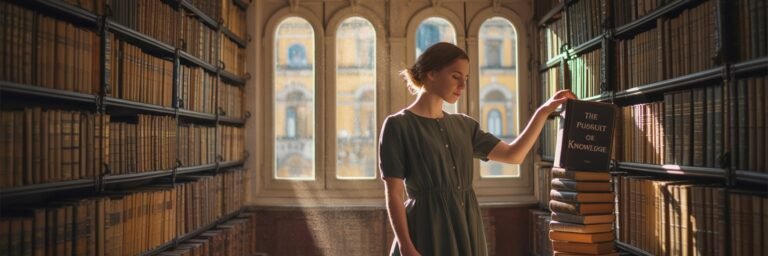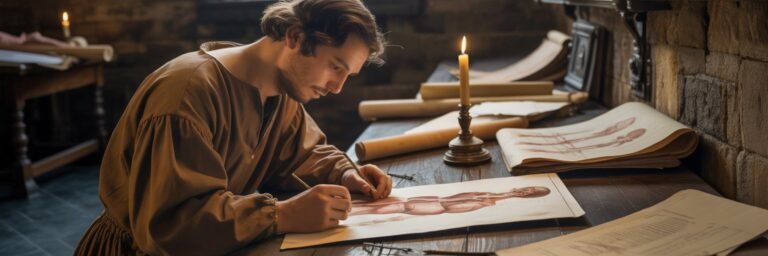INTRODUCTION
From the 14th to the 17th centuries, Europe underwent a rigorous cultural awakening known as the Renaissance. During this transformative epoch, which appropriately translates as ‘rebirth’, everyday life in European society underwent a monumental metamorphosis. The Renaissance reconfigured societal structures, shaping modern civilization, and influencing our contemporary comprehension of the world.
This article offers an in-depth tour of the commonplace elements during this pivotal era. A descriptive and engaging walk through life during the Renaissance furnishes a panoramic view of the transformative lifestyle that manifests the thought and spirit of the age.
HISTORICAL BACKGROUND
The humanist ethos of the Renaissance sprouted from the ashes of the Middle Ages. This was a period marred by the plague, political instability and religious strife. As European societies emerged from the shadow of these adversities, they yearned for enlightenment, stimulating the immense shift known today as the Renaissance.
Originating in Italy in the late Middle Ages, the Renaissance was a period of sublime innovation and contemplation that straddled roughly three centuries. The period, governed by the doctrine ‘ad fonts’ or ‘to the sources’, emphasized a return to the primary sources to emulate and, perhaps, even supersede the glories of ancient Greece and Rome. Consequently, it witnessed vast strides in art, literature, science, politics, religion, and daily life.
THEORIES AND INTERPRETATIONS
Mainstream historians like Jacob Burckhardt saw the Renaissance as a distinct epoch, a ‘prototype of the modern world’. He held that due to the revival of classical learning and the emancipation of the individual, the Renaissance fostered a worldly, secular outlook markedly different from the middle ages.
However, this theory was contested by individuals like Historian Jules Michelet, who suggested that the Renaissance was simply the continuation of progress begun in the Middle Ages. Renaissance scholars engaged in what was considered ‘modern’ by revising interpretations of classic texts, experimenting with scientific inquiry, and developing linear perspective in art.
MYSTERIES AND CONTROVERSIES
Renaissance witnessed both progression and controversies. Notable among them was the debate surrounding the earth’s position in the universe. While the Church maintained Ptolemaic geocentrism, scientists like Copernicus proposed heretical heliocentrism. The controversy over the “Copernican Revolution” echoed through the corridors of power and daily life, resulting in Copernicus’s works landing on the Church’s index of prohibited books.
The period also spawned the mysterious Voynich Manuscript, still undeciphered, with its bewildering writings and botanical diagrams, inciting speculation of alien communication, elaborate hoaxes, or lost languages.
SYMBOLISM AND CULTURAL SIGNIFICANCE
The Renaissance was imbued with abundant symbolism, reflecting its vibrant cultural significance. Fine arts burgeoned during this epoch, with artists abandoning medieval stylistic constraints for naturalism and individual expression.
Art was no longer just an accessory of the church but was used to demonstrate wealth, power, and intellect. In works of famed artists like Leonardo da Vinci, the symbolism was intricate; his sketch ‘Vitruvian Man’ symbolized the fusion of art and science, reflecting the era’s innovative spirit.
MODERN INVESTIGATIONS
Modern historians like Peter Burke, in his book ‘Renaissance: Studies in Art and Poetry’, offer detailed inquiry into the social and cultural dynamics of Renaissance life, revealing an intricate tapestry of public rituals, festivals, dances, and childbirth traditions.
Cutting-edge digital technology has also reinforced investigations into this epoch, with tools like infrared scans providing revelations about masterpieces like da Vinci’s ‘The Last Supper.’
LEGACY AND CONCLUSION
The legacy of the Renaissance reverberates in our lives today. From our own quest for knowledge that echoes the Humanist optimism, to our democratic notions of political power, to the aesthetics in the art and architecture that adorn our world, we are heirs to this multifaceted epoch.
INTRODUCTION
From the 14th to the 17th centuries, Europe underwent a rigorous cultural awakening known as the Renaissance. During this transformative epoch, which appropriately translates as ‘rebirth’, everyday life in European society underwent a monumental metamorphosis. The Renaissance reconfigured societal structures, shaping modern civilization, and influencing our contemporary comprehension of the world.
This article offers an in-depth tour of the commonplace elements during this pivotal era. A descriptive and engaging walk through life during the Renaissance furnishes a panoramic view of the transformative lifestyle that manifests the thought and spirit of the age.
HISTORICAL BACKGROUND
The humanist ethos of the Renaissance sprouted from the ashes of the Middle Ages. This was a period marred by the plague, political instability and religious strife. As European societies emerged from the shadow of these adversities, they yearned for enlightenment, stimulating the immense shift known today as the Renaissance.
Originating in Italy in the late Middle Ages, the Renaissance was a period of sublime innovation and contemplation that straddled roughly three centuries. The period, governed by the doctrine ‘ad fonts’ or ‘to the sources’, emphasized a return to the primary sources to emulate and, perhaps, even supersede the glories of ancient Greece and Rome. Consequently, it witnessed vast strides in art, literature, science, politics, religion, and daily life.
THEORIES AND INTERPRETATIONS
Mainstream historians like Jacob Burckhardt saw the Renaissance as a distinct epoch, a ‘prototype of the modern world’. He held that due to the revival of classical learning and the emancipation of the individual, the Renaissance fostered a worldly, secular outlook markedly different from the middle ages.
However, this theory was contested by individuals like Historian Jules Michelet, who suggested that the Renaissance was simply the continuation of progress begun in the Middle Ages. Renaissance scholars engaged in what was considered ‘modern’ by revising interpretations of classic texts, experimenting with scientific inquiry, and developing linear perspective in art.
MYSTERIES AND CONTROVERSIES
Renaissance witnessed both progression and controversies. Notable among them was the debate surrounding the earth’s position in the universe. While the Church maintained Ptolemaic geocentrism, scientists like Copernicus proposed heretical heliocentrism. The controversy over the “Copernican Revolution” echoed through the corridors of power and daily life, resulting in Copernicus’s works landing on the Church’s index of prohibited books.
The period also spawned the mysterious Voynich Manuscript, still undeciphered, with its bewildering writings and botanical diagrams, inciting speculation of alien communication, elaborate hoaxes, or lost languages.
SYMBOLISM AND CULTURAL SIGNIFICANCE
The Renaissance was imbued with abundant symbolism, reflecting its vibrant cultural significance. Fine arts burgeoned during this epoch, with artists abandoning medieval stylistic constraints for naturalism and individual expression.
Art was no longer just an accessory of the church but was used to demonstrate wealth, power, and intellect. In works of famed artists like Leonardo da Vinci, the symbolism was intricate; his sketch ‘Vitruvian Man’ symbolized the fusion of art and science, reflecting the era’s innovative spirit.
MODERN INVESTIGATIONS
Modern historians like Peter Burke, in his book ‘Renaissance: Studies in Art and Poetry’, offer detailed inquiry into the social and cultural dynamics of Renaissance life, revealing an intricate tapestry of public rituals, festivals, dances, and childbirth traditions.
Cutting-edge digital technology has also reinforced investigations into this epoch, with tools like infrared scans providing revelations about masterpieces like da Vinci’s ‘The Last Supper.’
LEGACY AND CONCLUSION
The legacy of the Renaissance reverberates in our lives today. From our own quest for knowledge that echoes the Humanist optimism, to our democratic notions of political power, to the aesthetics in the art and architecture that adorn our world, we are heirs to this multifaceted epoch.
INTRODUCTION
From the 14th to the 17th centuries, Europe underwent a rigorous cultural awakening known as the Renaissance. During this transformative epoch, which appropriately translates as ‘rebirth’, everyday life in European society underwent a monumental metamorphosis. The Renaissance reconfigured societal structures, shaping modern civilization, and influencing our contemporary comprehension of the world.
This article offers an in-depth tour of the commonplace elements during this pivotal era. A descriptive and engaging walk through life during the Renaissance furnishes a panoramic view of the transformative lifestyle that manifests the thought and spirit of the age.
HISTORICAL BACKGROUND
The humanist ethos of the Renaissance sprouted from the ashes of the Middle Ages. This was a period marred by the plague, political instability and religious strife. As European societies emerged from the shadow of these adversities, they yearned for enlightenment, stimulating the immense shift known today as the Renaissance.
Originating in Italy in the late Middle Ages, the Renaissance was a period of sublime innovation and contemplation that straddled roughly three centuries. The period, governed by the doctrine ‘ad fonts’ or ‘to the sources’, emphasized a return to the primary sources to emulate and, perhaps, even supersede the glories of ancient Greece and Rome. Consequently, it witnessed vast strides in art, literature, science, politics, religion, and daily life.
THEORIES AND INTERPRETATIONS
Mainstream historians like Jacob Burckhardt saw the Renaissance as a distinct epoch, a ‘prototype of the modern world’. He held that due to the revival of classical learning and the emancipation of the individual, the Renaissance fostered a worldly, secular outlook markedly different from the middle ages.
However, this theory was contested by individuals like Historian Jules Michelet, who suggested that the Renaissance was simply the continuation of progress begun in the Middle Ages. Renaissance scholars engaged in what was considered ‘modern’ by revising interpretations of classic texts, experimenting with scientific inquiry, and developing linear perspective in art.
MYSTERIES AND CONTROVERSIES
Renaissance witnessed both progression and controversies. Notable among them was the debate surrounding the earth’s position in the universe. While the Church maintained Ptolemaic geocentrism, scientists like Copernicus proposed heretical heliocentrism. The controversy over the “Copernican Revolution” echoed through the corridors of power and daily life, resulting in Copernicus’s works landing on the Church’s index of prohibited books.
The period also spawned the mysterious Voynich Manuscript, still undeciphered, with its bewildering writings and botanical diagrams, inciting speculation of alien communication, elaborate hoaxes, or lost languages.
SYMBOLISM AND CULTURAL SIGNIFICANCE
The Renaissance was imbued with abundant symbolism, reflecting its vibrant cultural significance. Fine arts burgeoned during this epoch, with artists abandoning medieval stylistic constraints for naturalism and individual expression.
Art was no longer just an accessory of the church but was used to demonstrate wealth, power, and intellect. In works of famed artists like Leonardo da Vinci, the symbolism was intricate; his sketch ‘Vitruvian Man’ symbolized the fusion of art and science, reflecting the era’s innovative spirit.
MODERN INVESTIGATIONS
Modern historians like Peter Burke, in his book ‘Renaissance: Studies in Art and Poetry’, offer detailed inquiry into the social and cultural dynamics of Renaissance life, revealing an intricate tapestry of public rituals, festivals, dances, and childbirth traditions.
Cutting-edge digital technology has also reinforced investigations into this epoch, with tools like infrared scans providing revelations about masterpieces like da Vinci’s ‘The Last Supper.’
LEGACY AND CONCLUSION
The legacy of the Renaissance reverberates in our lives today. From our own quest for knowledge that echoes the Humanist optimism, to our democratic notions of political power, to the aesthetics in the art and architecture that adorn our world, we are heirs to this multifaceted epoch.
Everyday life during the Renaissance, detailed in diverse facets, offers an engaging script of human endeavor. It was an era that awakened the individual’s potential, kindling a global movement that widened horizons, and forever changed the world. As Will Durant astutely put it, ‘The Renaissance was a renewal of youth, a puberty of mankind, a manifesto of man’s wonder and his widening power.’
during the Renaissance, detailed in diverse facets, offers an engaging script of human endeavor. It was an era that awakened the individual’s potential, kindling a global movement that widened horizons, and forever changed the world. As Will Durant astutely put it, ‘The Renaissance was a renewal of youth, a puberty of mankind, a manifesto of man’s wonder and his widening power.’
during the Renaissance, detailed in diverse facets, offers an engaging script of human endeavor. It was an era that awakened the individual’s potential, kindling a global movement that widened horizons, and forever changed the world. As Will Durant astutely put it, ‘The Renaissance was a renewal of youth, a puberty of mankind, a manifesto of man’s wonder and his widening power.’


